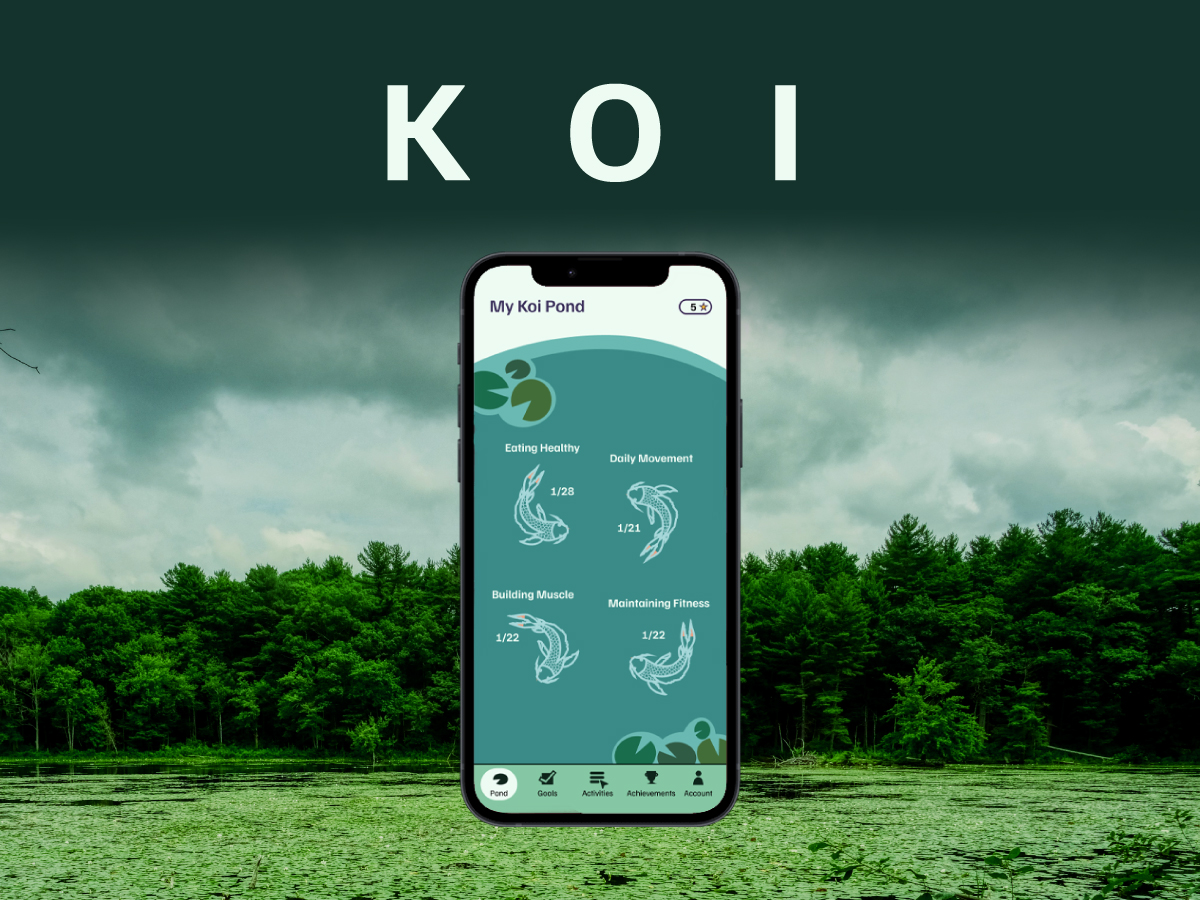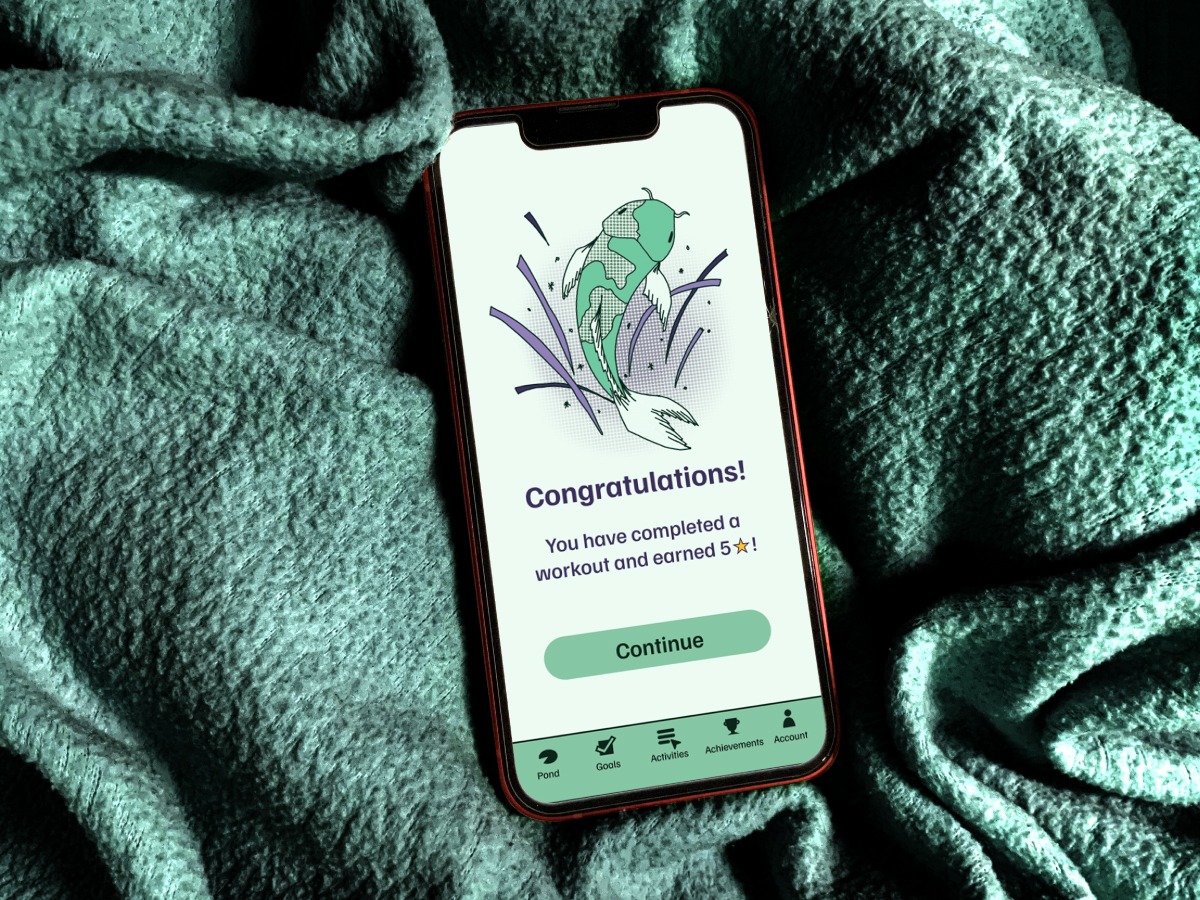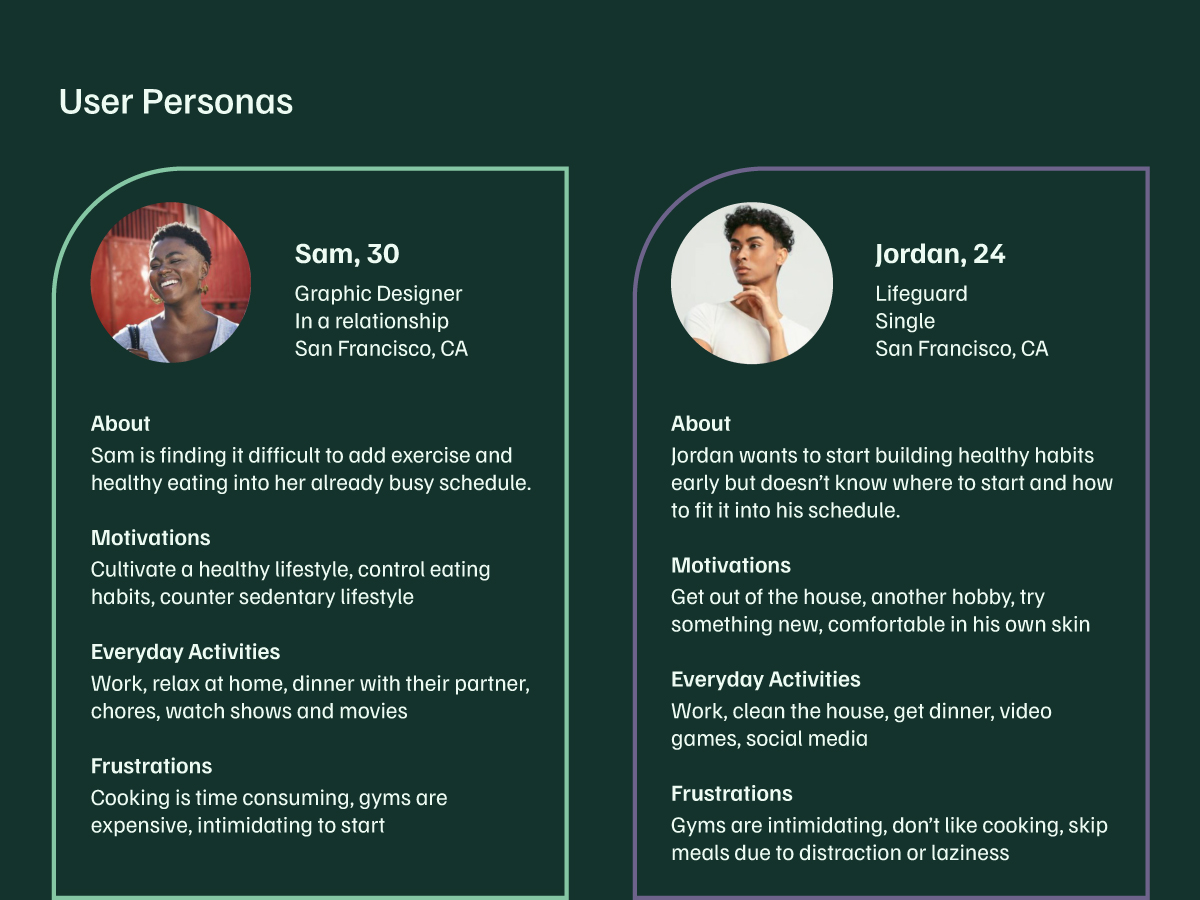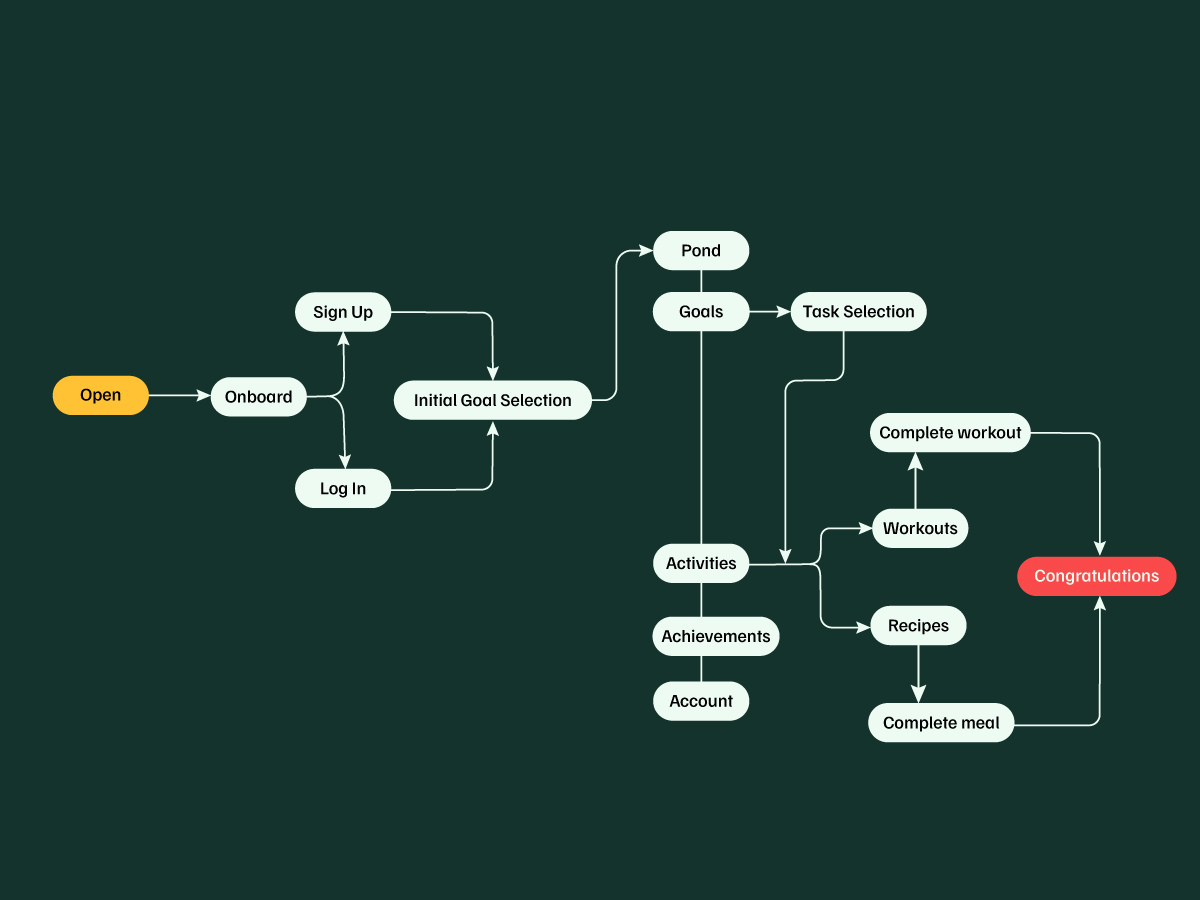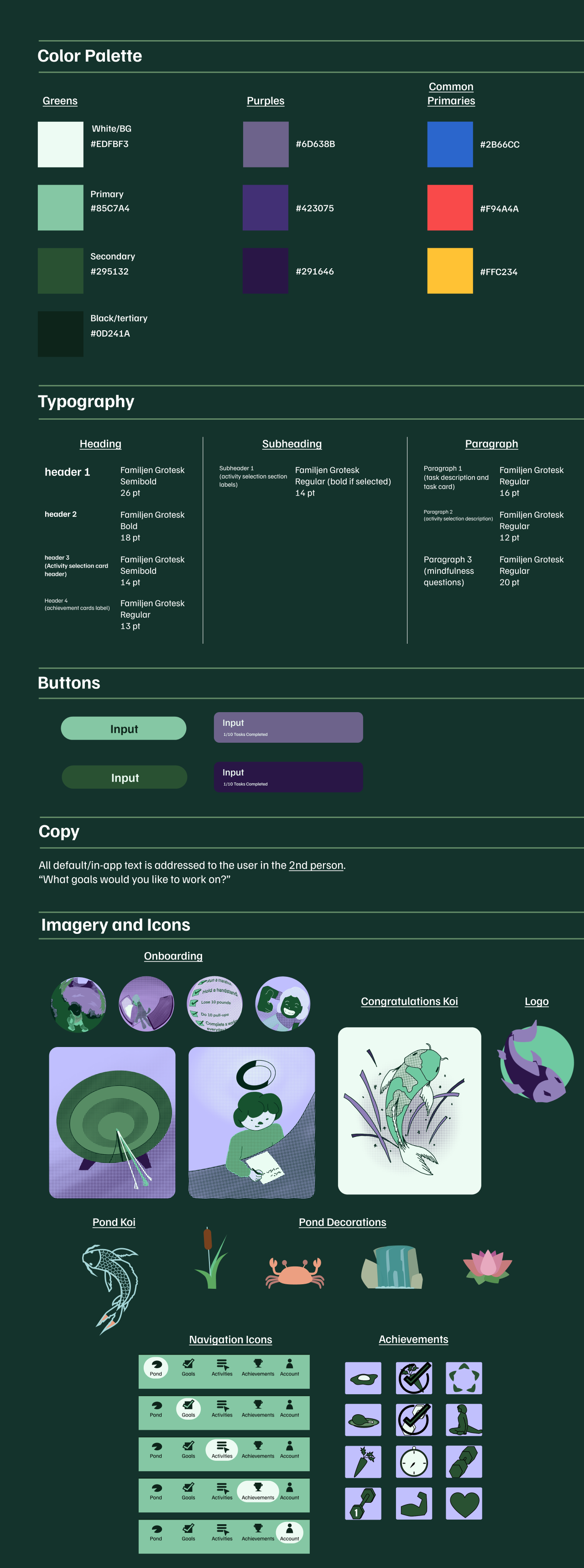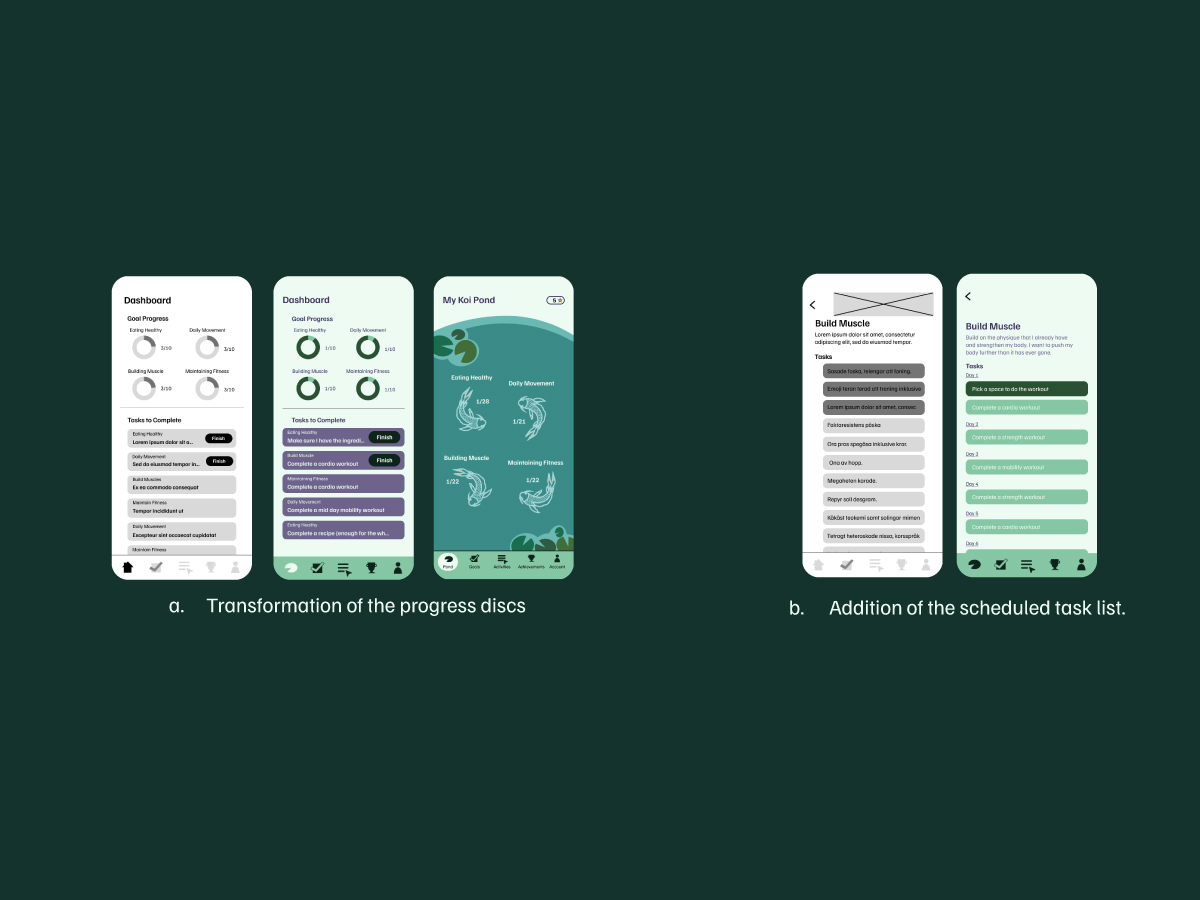Challenges
The biggest challenge was deciding on a clear direction for Koi. I knew I wanted Koi to be a typical health tracking app, while also include goal tracking capabilities, and involve a gamified component. Inspiration came from multiple apps and I did not know how to distill them.
As I started making iterations, I decided aspects that I wanted to keep and remove. The progress tracking discs on the dashboard in the low fidelity and version 1 high fidelity prototype was very insightful. So when I redesigned the dashboard to incorporate a gamified feature, the discs stuck around (a). The tasks page in the low fidelity prototype began as a long list of things to get done, however in the version 1 high fidelity prototype, I made the list into a schedule for a more guided experience (b).
The system of operations I followed for this project was a bit different than the steps I normally follow. Many big decisions were made at the beginning of the process rather than at the last moment, like I am used to. Through this, I learned that the initial decisions are not hard rules just because I chose them initially. They are away to start the design process.
